Orcas – a Tale of Many Cultures
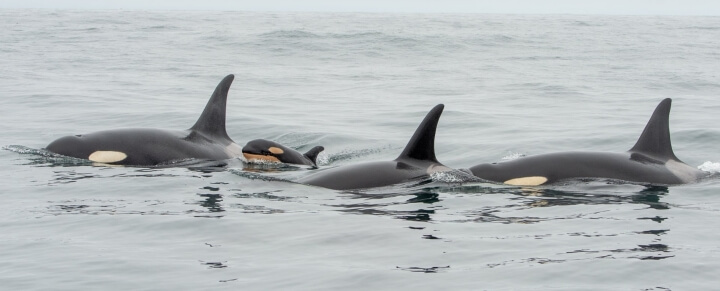
The J pod of the Southern Resident orcas. Photo by John Forde and Jennifer Stevens.
Part Three of a series celebrating the cultures of whales
While culture – the passing on of learned behavior – is generally a great asset, a strongly held culture can sometimes make it difficult to adapt to new circumstances. Consider the case of the Southern Resident orcas of the Pacific Northwest:
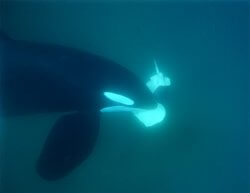
Orca with stingray by Ingrid Visser.
In the wild, orcas live in tightly knit family groups, each of which has a unique culture that’s passed down from generation to generation. Just like humans, this applies particularly to what kinds of food they eat.
Orcas in Antarctic waters have been seen showing their young how to tip a seal off a floating piece of ice.
Off the coast of New Zealand, there are families who teach their calves the art of catching a stingray and carefully removing the barb.
In the Salish Sea, off the coast of Seattle, there are two populations of orca: the Southern Residents and the Transients. The Southern Residents eat only fish, mainly Chinook salmon. The Transients eat only mammals, like seals and porpoises. And the two populations stay out of each other’s way.
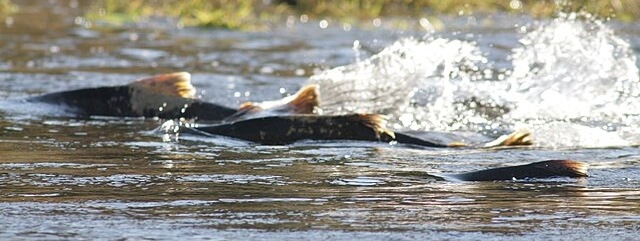
Chinook salmon moving upstream. Wikimedia Commons
Over recent decades, however, the Chinook numbers have been dwindling. This is due to several factors including the damming of the rivers where the Chinook spawn their young, and it has led to the Southern Residents being officially listed as an endangered population.
It would seem to make sense for them to switch to a more varied diet. And they do traditionally supplement with other kinds of fish at certain times of the year, but this has not been enough to keep their population thriving. (It would also be physiologically difficult to switch to mammals.)
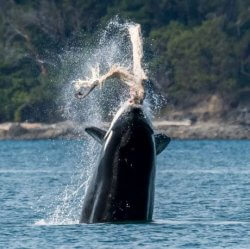
Transient orca captures a seal. Photo by Jeff Friedman, Pacific Whale Watch Association
Meanwhile, with no dietary challenges, the Transient population has been growing – to the point where they’re becoming more resident than transient. And the Southern Residents are becoming more transient as they go further afield in search of other large fish like halibut and lingcod.
Just over 100 miles to the north of the Southern Residents are the Northern Residents, who live off the coast of British Columbia. The Northern Residents also eat salmon, but there’s no significant shortage in that region.
And even though the two populations border each other, there’s been no apparent migration of the southerners into northern territory. We don’t fully understand why that is, but it may well have to do with a culture that’s been passed from generation to generation over hundreds, maybe thousands, of years.
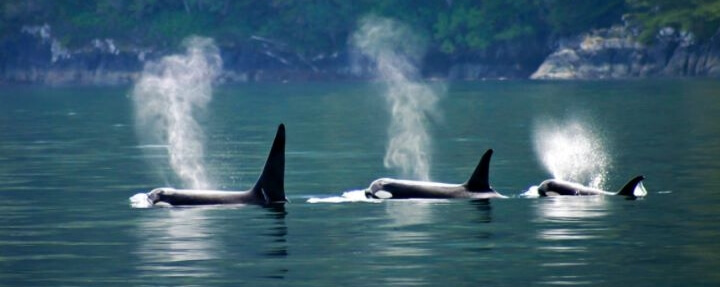
Northern Resident orcas off the coast of British Columbia
It’s not very different from what happens to human populations when, for whatever reason, they have difficulty adapting to changing times.
Right now, after all, our own culture seems to be having some difficulty adapting to a rapidly changing world.
All ocean-going orcas have deeply rooted cultures. For orcas growing up in captivity, on the other hand, there is no real culture at all. They learn to eat what they’re given when they’re given it, and never learn the skills necessary to catch their own food. That’s why they cannot be released into the open ocean.
But although orcas who come to a sanctuary will still need to be provided with the food they’ve grown up with, they will have many of the benefits of an ocean environment. Most importantly they’ll be swimming greater distances without going in a circle, diving more than their own body length and interacting with other living creatures.
Next page: How Humpback Love Songs Go Viral